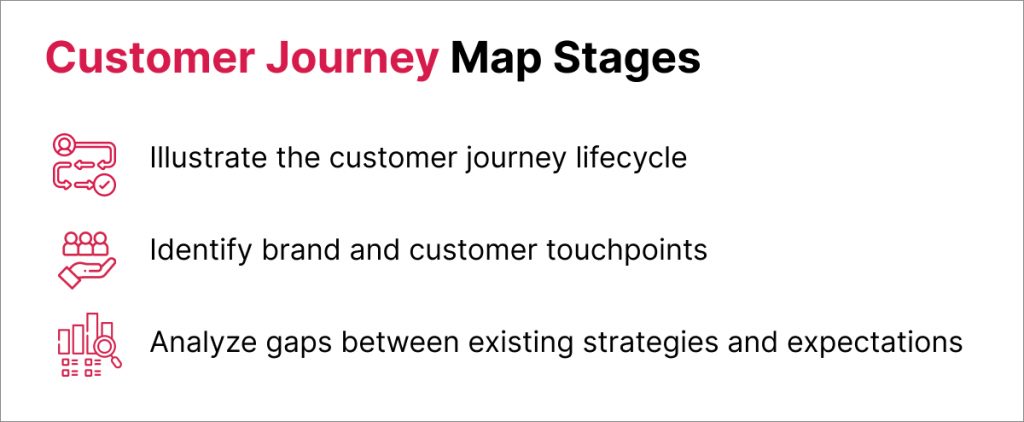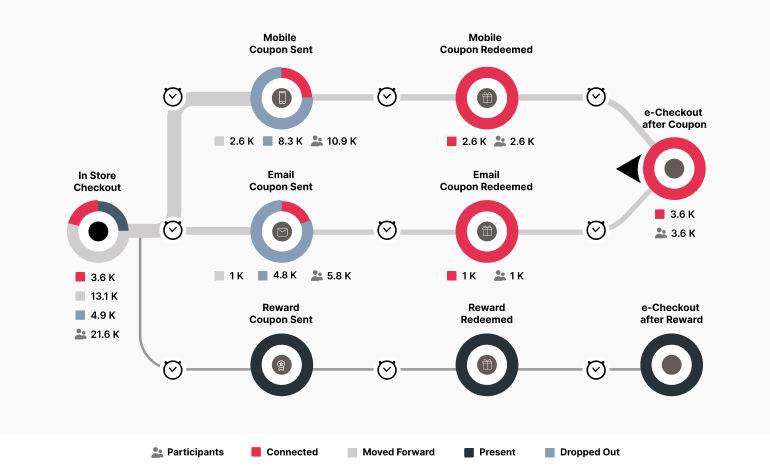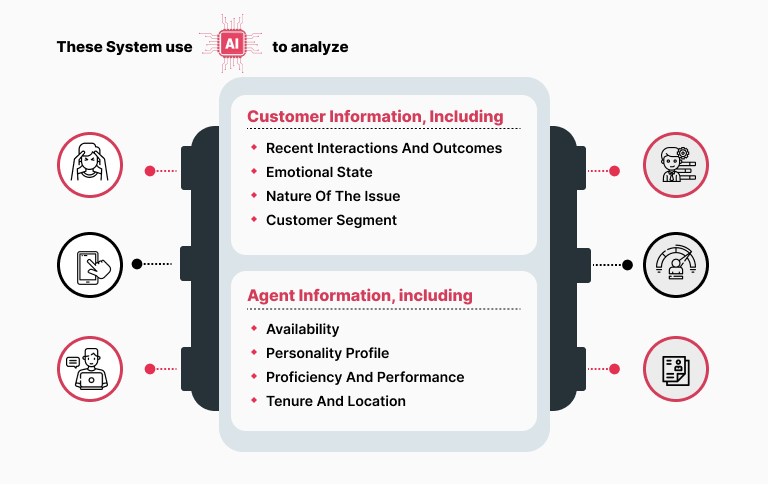Everything about the customer is changing— their expectations, behavior patterns, motivations, and purchase triggers. As a result, critical customer interactions today are digital, occurring anytime, anyplace.
Without customer journey maps in place, it can be difficult to ascertain why a customer spends so long on a certain platform or feature. Similarly, it might be challenging to understand why a customer takes several steps to transition from Point X to Point Y when it should ideally take one. A customer journey is very specific to the experiences customers have.
Therefore, customer journey mapping serves as a compass, providing valuable insights into customers’ specific experiences throughout their interaction with your organization. Imagine being able to predict the next step of your target customer; that’s the ‘super-power’ of customer journey maps. This is the reason why 69% of businesses list the customer journey as a top investment priority this year.
Contents
What is a Customer Journey Map?
A customer journey map is a visual representation of the processes a customer goes through with the enterprise to achieve a certain goal. It encompasses all the customer interactions across all devices, channels, and touchpoints through every stage of the customer lifecycle – right from awareness to brand loyalty. It is one of the most effective ways to assess the needs, motivations, and aspirations of customers and how they feel about the brand or product.
Despite utilizing various communication channels to communicate with their customers, brands often miss-out on connecting each activity with the customer journey. They focus on individual customer interaction touchpoints devoted to onboarding, billing & servicing; in contrast, a customer journey spans a series of touchpoints end-to-end. This requires the right tools and techniques that help in viewing and analyzing the complete journey.
So how does one go about creating customer journey maps that perfectly aligns with their core target audience?
The crucial first step is customer journey analytics to gather inputs and insights from customers and prospects with the help of surveys, social media and website analytics, customer interaction analytics, product and service reviews, one-on-one interviews with buyers, and the like. While the process of customer journey analytics might seem extensive and exhaustive, it’s most definitely worthwhile.
‘You’ve got to start with the customer experience and work back toward the technology – not the other way around” – Steve Jobs
The Difference between CX & Customer Journey
Customer journey and digital customer experience are not the same. A customer journey is a series of activities and steps a customer goes through to achieve the goal. On the other hand, a positive customer experience is how a customer feels about the entire process. It is the set of conscious & subconscious attitudes, feelings, and beliefs regarding the process. To sum it up, the customer journey is about what they do at each stage, and CX is how they feel about the entire lifecycle. The idea is to understand the CX to refine the customer journey for a seamless & integrated experience.
The Approach to Customer Journey Mapping
In its most fundamental form, customer journey mapping begins with compiling a series of user goals and actions into a specific timeline framework. It’s an effective tool that examines the story of how a customer perceives and relates to the brand or product over time and helps in visualizing the digital customer experience of interacting with the brand from the customer’s point of view.
The customer journey map framework is used as a blueprint to create a narrative fleshed-out with user thoughts and emotions. Subsequently, the narrative is integrated into a visualization that is used to communicate insights and guide the product’s design process. Specifically, customer journey maps should always be created to support a business goal & can be broadly split into 3 distinct stages:

Customer Journey Best Practices to Drive Growth & Loyalty
Discover the strategic approaches and actionable tips that will enable you to optimize every stage of your customer’s journey. By implementing these customer journey best practices, you can enhance customer satisfaction, drive repeat business, and ultimately fuel sustainable growth:
- Set Clear Objectives – Understand the goals and set clear objectives about why you are creating a map. This will decide the buyer persona, demographics, and psychographics of who represents your average target group. Having a clear objective with a well-defined persona acts as a constant reminder to direct every aspect of your customer journey towards them.
- Profile Personas & Define their Goals – Conduct research and gather valuable customer feedback either through questionnaires, user testing, surveys, product and service reviews, or one-on-one interviews. The key is to reach out only to customers and prospects & those who are interested in your offerings.
- Enlist Crucial Touchpoints – Customer journey touchpoints are the various channels through which customers interact with your brand. According to the Genesys State of Customer Experience report, fewer than 30 percent of companies track their customers’ channel preferences. Listing down the most common customer journey touchpoint will be the one most likely to be associated with an action and the one you need to focus on.

- Determine the Resources – It is important to consider the inventory of resources you have and the ones that you will need to improve the customer’s journey. For instance, a map can serve as a powerful tool to highlight gaps in the post-purchase service; this input can be used to persuade the internal management team and operational heads to implement the right customer service tools in place and manage customer demands more efficiently.
- Create Cross-touchpoint Activities – While the design is important, the focus is to create an efficient journey map that includes cross-touchpoint activities, including support for multimodal interactions, moving from self-service to an assisted service, proactive notifications, and status reminders. All of these increase operational efficiency and shape customer behavior by reducing the effort and stress involved in connecting via individual customer journey touchpoints.
- Incorporate Predictive Routing –A proactive route to create a smooth, seamless, and positive customer experience is by incorporating predictive routing to drive optimal journey maps with AI & Machine Learning. Predictive routing incorporates these technologies to gather data and create the best customer-to-destination match and helps in identifying the factors that influence customer-to-business interactions while optimizing operations.

- Explore Technologies & Designs That Enhance Experiences – Emerging technologies and platforms can greatly influence customer perceptions. Explore how real-time customer journey analytics, wearables, internet-of-things devices, and conversational interfaces can optimize your CX. Anticipate new experiences through exploratory design. Spur innovation with interactive wireframes, online testing, prototypes, and direct observation of journeys.
A customer journey map is beneficial in facilitating a common business understanding of how customers should be treated across all channels, including pre-sales, logistics, distribution, and post-sales. Moreover, it helps to break down ‘organizational silos’ for more open and wider customer-focused communication. Here are a few instances of how brands optimized business and operational efficiency with customer journey maps.
Brands who Differentiated with Customer Journey
Adobe is mirroring its creative design tool prominence into reimagining its office space to inspire a cross-functional working culture that best aligns with its organizational goals, objectives, and values.
One of the core values of Metro Bank is to offer impeccable service and convenience in its domain. It brings to life its brand promise by providing employees the means and approvals to identify ways to kill bank rules that don’t work with their audience.
IKEA’s journeys address the friction that arises from navigating a massive parking lot or the extremely challenging path through the store with peak moments of satisfaction. For instance, it gives certain, especially widely desirable items at a huge discount, what it calls a “gasp price” at such an affordable price that it takes customers’ breath away.
To win over and satisfy the ever-evolving needs of the digital-savvy consumer today requires deep insights, with a passion for designing distinct and personalized customer experiences, and infusing these experiences across the customer lifecycle.
Given the value customer journey maps can drive, its scope to scale the business performance for enterprises across industries is evident. But having them is not enough; executing them to simplify the lives of your customers is the key.





